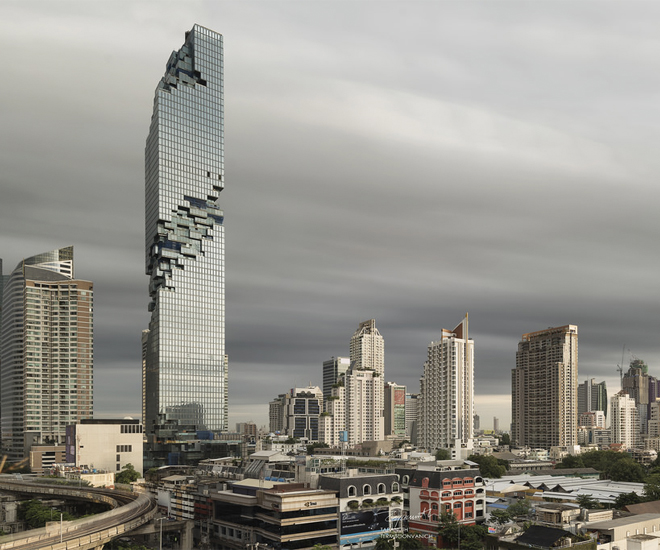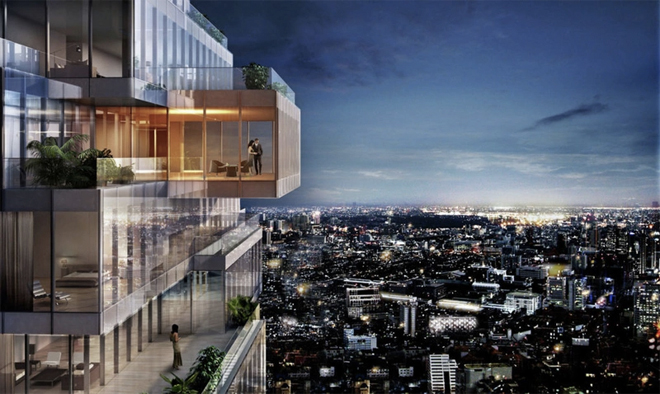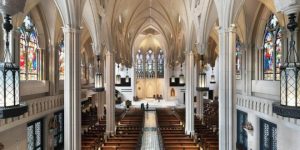The Mad Architect: Ole Scheeren has made a career out of Deconstruction
Ole Scheeren believes “Form Follows Fiction” and that all great architecture should tell a great story and his mad architecture certainly tells epic tales

Ole Scheeren is a German architect, urbanist and principal of Büro Ole Scheeren Group. On hindsight, one surmises it should have been a no brainer that Scheeren has become one of the most prominent architects of our time. From working at his father’s office designing furniture during his teens to winning the Royal Institute of British Architects (RIBA) Silver Medal in 2000 while attending architecture school, the 46 year old Scheeren has been responsible for award-winning and laws of physics confounding architectural projects across the globe.
Mad Architect Ole Scheeren has made a career out of Deconstruction

One might wonder if the prefix “mad’ might be an editorial attempt at clickbait but Luxuo assures you, it is not. As an architect, Ole Scheeren is indeed as mad as they come. Take the 234-metre, 44-story skyscraper on East Third Ring Road, Guanghua Road at the heart of Beijing’s Central Business District, Scheeren’s CCTV Headquarters is not just an architectural icon but an ode to madness – The main building is not a traditional tower, but a loop of six horizontal and vertical sections covering 5,090,000 sq ft of floor space, creating an irregular grid on the building’s facade with an open center.
Remment Lucas “Rem” Koolhaas, renowned Architectural Theorist and Professor in Practice of Architecture and Urban Design at the Graduate School of Design at Harvard University once opined that Beijing’s CCTV Headquarters “could never have been conceived by the Chinese and could never have been built by Europeans”. Indeed, in 2007, Scheeren won The Times’ World’s Most Ambitious Projects award and in 2008, he made a clean sweep of Best New Global Design, Architecture’s Ten Best and Wallpaper’s Best Building Site.

Scheeren’s CCTV Headquarters is not just an architectural icon but an ode to madness

The blocks of The Interlace are stacked four high at the center to provide maximum of 24 floors, providing almost every home with a wide view of the surrounding areas.
During that time, Scheeren had also been working on The Interlace. A 1000-unit apartment building complex in Singapore, tone-deaf in terms of Feng Shui (it’s not good to live above an empty space of nothing) but an architectural masterstroke for its jenga-block design, bequeathing the award-winning development the appearance of 31 irregularly stacked bricks.
Consisting of six story blocks staggered in a hexagonal arrangements surrounding eight spatial courtyards, each with their own swimming pools that are part of the architecture and not just mere amenity features. The blocks of The Interlace are stacked four high at the center to provide maximum of 24 floors, providing almost every home with a wide view of the surrounding areas. CNBC described it as “a challenge to traditional architecture not just in Singapore, but all over the world”. By 2014, Interlace won Urban Habitat Award. By 2015, Ole Scheeren took home World Building of the Year at the year’s World Architecture Festival.
- The Mahanakhon, a new 314-metre skyscraper in Bangkok, currently Thailand’s tallest building
- The Mahanakhon appears to be falling apart thanks to the horizontally and vertically divided glass walls contributing to the building’s “pixelated” appearance.
- Each Mahanakhon unit has a balcony view that one can describe as literally breathtaking
His recent architectural opus? The Mahanakhon, a new 314-metre skyscraper in Bangkok, currently Thailand’s tallest building. Opened in December 2016, Mahanakhon is a mixed-use skyscraper featuring the unconventional appearance of a glass curtain walled square tower with a cuboid-surfaced spiral cut into the side of the building. Home to 209 units of The Ritz-Carlton Residences Bangkok, it looks complete like a pixelated ribbon skyscraper which then barely survived an epic battle between giant Jaeger Robots and Pacific Rim monsters – The Mahanakhon appears to be falling apart thanks to the horizontally and vertically divided glass walls contributing to the building’s “pixelated” appearance. Priced between US$1,100,000 to US$17,000,000, it is one of the most expensive “partially constructed” condominiums in Bangkok.

Guardian Art Center currently under construction in close proximity to the Forbidden City
Scheeren is currently working on Guardian Art Center, a exhibition space and headquarters for China’s oldest art auction house currently under construction in close proximity to the Forbidden City. For all intents and purposes, the concept Guardian Art Centre is essentially a glass box sitting on top of a set of smaller grey stone structures reminiscent of the hutong or narrow alley houses of old Beijing.
Check out his TED talk on why architecture should tell a great story:












